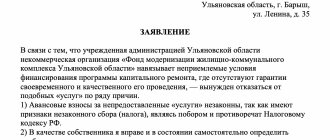Many of us have at least a small dacha plot in a gardening community. And every second summer resident regularly faces problems of collecting and spending SNT funds. The topic of contributions is one of the most pressing and occupies one of the first places among dacha conflicts.
Very often funds are collected in cash and records are not properly maintained. And among the contributions there are generally extremely dubious ones, which are most often confirmed by fictitious minutes of meetings. Nobody wants to deal with all these dacha problems and waste their time and nerve cells.
But in order to avoid getting into such situations, you need to know your rights and obligations, understand what you are obliged to pay for, and in what cases you have every right to refuse payment.
In today’s article we will analyze a real example of a case from judicial practice that reached the Supreme Court of the Russian Federation. Read more carefully and you will find out who has the right not to pay fees and in what cases.
What are membership fees paid for according to the law?
Art. 14 of Law 217-FZ of July 29, 2017 N 217-FZ “On gardening and horticulture by citizens for their own needs” divides gardeners’ contributions into:
- Target
- Membership
The main difference between membership fees and target fees is the purpose of payment.
What is included in targeted contributions to SNT
Targeted contributions in a gardening partnership are collected to cover one-time and irregular expenses. For example, if in SNT you need to install a common fence, build a road, install gas, repair a well, or prepare a survey of public lands.
Why do we pay membership fees to SNT?
Membership fees are exclusively paid for:
- maintenance of common property (including improvement of common lands)
- supplying SNT with electricity, gas, water
- payment for security and fire safety services
- removal of MSW (municipal solid waste)
- conducting audits
- salary payments under employment contracts to employees
- taxes and fees SNT
- implementation of decisions of general meetings.
No other needs other than those listed above can be covered by membership fees.
About members and forms of owners' associations
Only individuals can be members of a partnership.
Unlike Law N66-FZ, which established the age limit for participants from 18 years old, now there is no such restriction. As before, the participation of legal entities and individual entrepreneurs in gardening and vegetable farming partnerships is not provided for by Law N217-FZ.
Acceptance as a member of the partnership is carried out on the basis of an application, which is submitted to the board of the partnership for submission to the general meeting of members of the partnership.
If Law N66-FZ assumed the existence of such forms of horticultural partnerships as SNT, ONT, DNT and DNP, now only two remain: horticultural non-profit partnerships (SNT) and gardening non-profit partnerships (ONT).
The deadline and obligation for the reorganization of previously created partnerships have not been established. Constituent documents and names are subject to compliance with Law N217-FZ upon the first change of constituent documents. Until documents are brought into compliance with Law N217-FZ, they are valid to the extent that does not contradict Law N217-FZ.
It is also provided that changes in the names of partnerships in connection with their bringing into compliance with Law N217-FZ do not require changes to the title and other documents containing their previous names. Such changes may be made at will.
How to pay membership fees to SNT in 2021
Each gardening organization independently determines how to pay membership fees. According to the law, the payment procedure must be regulated and prescribed in the SNT charter, and all SNT calculations as a legal entity. persons must go through cashless payments. At the same time, the law states that membership fees cannot be collected more than once a month.
In fact, gardening usually has its own regulations. Membership fees in the form of utility bills, which are paid according to tariffs (garbage removal, electricity, sewerage, etc.) are collected monthly. The remaining amount (for example, for unforeseen repairs of common property, taxes, mowing grass in a common area, wages for watchmen) is collected in one payment - once a year.
With targeted contributions it’s simple - they raised the issue at a meeting, voted and made a decision on the procedure and timing of payment. Payment of contributions according to the new rules only through the bank. Read about the features of such payment in 2021 here.
Results
The law provides for a strictly limited list of purposes for which SNT has the right to accept membership and targeted contributions. They can only be accepted into the SNT current account. Collection of contributions in cash is prohibited. Collecting membership fees is allowed no more than once a month. However, if SNT continues to collect contributions in cash, no sanctions will follow for them from the tax office, since this type of collection does not apply to cash transactions, the procedure for which is established by the Central Bank. This means that it does not fall within the competence of the Federal Tax Service of the Russian Federation.
SNT may apply a simplified system for taxation. Find out more about it in our section “STS” .
You can find more complete information on the topic in ConsultantPlus. Free trial access to the system for 2 days.
Membership fees
Every year the board increases membership fees, and many people ask, on what basis?
Membership fees are paid according to the tariff schedule established locally. This applies to utility bills. Otherwise, the amount of contributions depends on the additional costs of maintaining the common property.
The basis for membership fees is the income and expense estimate of SNT, which any member of the partnership has the right to familiarize themselves with. In addition, payments must have an economic justification (concluded contracts with hired employees, confirmation of payment for activities related to the maintenance of the PDO.)
Thus, each member of the partnership has the right to participate in the discussion and proposal to reduce membership fees by reducing unreasonable expenses.
The annual increase in membership fees directly depends on the increase in utility tariffs, the increase in wages for mercenaries and on the annual increase in prices.
Why is a compensation fund created?
Hand laying a question mark sign made up of coins on a white background.
British Pounds.Focus on the first one-pound coin. A self-regulatory organization creates a compensation fund to ensure the property liability of members of the association. The Town Planning Code provides for the creation of comp funds in order to ensure property liability arising from:
- as a result of causing harm to the life and health of citizens, the property interests of individuals and legal entities, the environment, and cultural heritage sites;
- as a result of violation of contractual obligations when performing construction work.
The fund is formed in monetary form through contributions from members. The amount of payment is established by the internal administrative documents of the SRO, but must correspond to the minimum amount established in paragraphs 10-13 of Article 55.16 of the Civil Code of the Russian Federation.
Deadlines for payment of membership fees
Each SNT establishes not only payment rules, but also optimal deadlines. Thus, general meetings, as a rule, are scheduled for the May weekend, which coincides with the opening of the summer season. At the meeting, a decision is made on the amount of membership fees. The board reports for those payments that were spent last year (including those collected for unforeseen expenses) and establishes a new payment. Payment deadlines are specified in the Charter. If utility bills are usually collected once a month or once a quarter, then payments for “additional payments” for other needs are often set for one-time payment, for September-October, at the close of the summer season.
Payments of SRO participants: tax accounting under the main system
Participants of self-regulatory organizations are required to make entrance and regular annual contributions, and also transfer money to the compensation fund. In addition, many SROs require that each participant insure their civil liability to customers and clients. If participation in an SRO is necessary, then all of the listed amounts can be taken into account when taxing profits: contributions - on the basis of subparagraph 29 of paragraph 1 of Article 264 of the Tax Code of the Russian Federation, insurance payments - on the basis of paragraph 1 of Article 263 of the Tax Code.
Contributions can be recognized at a time, that is, without distribution over several periods. Experts from the Russian Ministry of Finance also agree with this (letter dated December 23, 2010 No. 03-03-06/1/803). As for insurance payments, they must be written off evenly over the term of the contract in proportion to the number of calendar days of the contract in the reporting period (clause 6 of Article 272 of the Tax Code of the Russian Federation).
If joining an SRO occurs on a voluntary basis, it will be more difficult to take into account the costs, since tax authorities will likely argue that such costs are not economically justified. But even in such a situation, contributions, in our opinion, can be defended. To do this, you need to refer to the list of other expenses associated with production and sales. This list mentions “other expenses” (subclause 49, clause 1, article 264 of the Tax Code of the Russian Federation), which can also include contributions to SROs.
Distribution of membership fees to owners according to the law according to the area of the plot or house
There are many disagreements in SNT regarding the distribution of membership fees. The law in this regard specifies that contributions are paid in proportion to the number of acres, the square footage of the property or the size of the share in the common shared property.
Most often, SNT members pay contributions in proportion to the size of the land plot, and real estate is not taken into account. The larger the plot, the higher the payment and it doesn’t matter how many people use the dacha, how often they come and how much garbage they throw out. The rules for the distribution of membership fees are prescribed in the Charter of the partnership.
SRO Compensation Fund: basic provisions of work, basics of legislative regulation
The SRO compensation fund is a mandatory fund that is created in accordance with the legislation of the Russian Federation and functions in the system as a structural unit of a self-regulatory organization.
The compensation fund is an integral part of the SRO system and every applicant for membership in the SRO learns about its existence, because upon joining the future member is required to pay a contribution to the SRO Compensation Fund. Very often, applicants confuse two related concepts - the SRO compensation fund for damages and the SRO compensation fund for ensuring contractual relations. A compensation fund for damages must be created. There are slightly different requirements for the creation of the Contractual Relations Compensation Fund.
Why are SRO compensation funds needed?
Each organization creates a fund intended to secure obligations and to compensate for damage caused during work - hence its name. The table clearly shows the amount of contributions made to the SRO comp funds. The money itself is credited and spent according to the following principles:
- If a participant causes damage during construction or design work, it will be compensated to the customer from the fund.
- The required fund sizes are calculated by law, based on the total number of participants in the organization
- A contribution is calculated separately, which does not go towards compensating for damage, but provides for obligations.
Thus, the SRO acts as a guarantor to customers who turn to participating companies for services. The SRO compensation fund table will help you calculate the costs of joining in advance.
Compensation fund of SRO for compensation of harm
The SRO Compensation Fund for Harm Compensation unites all members of a self-regulatory organization in order to prevent risks for both the self-regulatory organization and SRO members when carrying out their direct activities. To do this, all applicants for membership in a self-regulatory organization are required to pay a contribution to the SRO Compensation Fund, which will compensate for damage to civilians in the event of harm.
In fact, the SRO Compensation Fund is an insurance organization for a narrow circle of people in the middle of the most self-regulatory organization. The Compensation Fund exclusively compensates civil damages to third parties.






